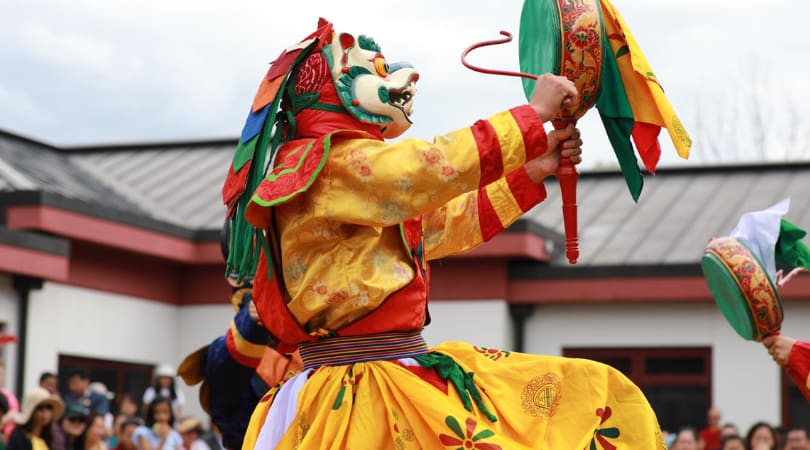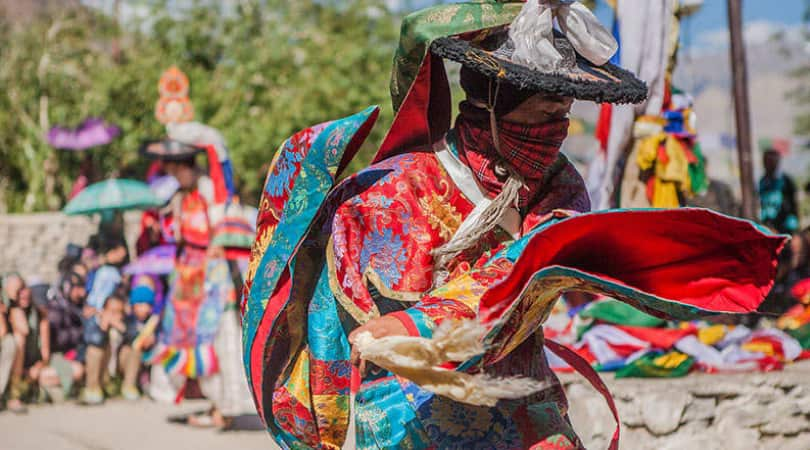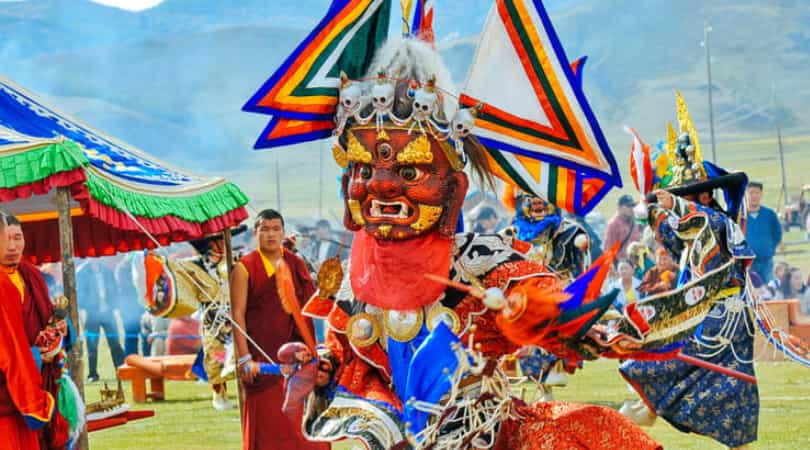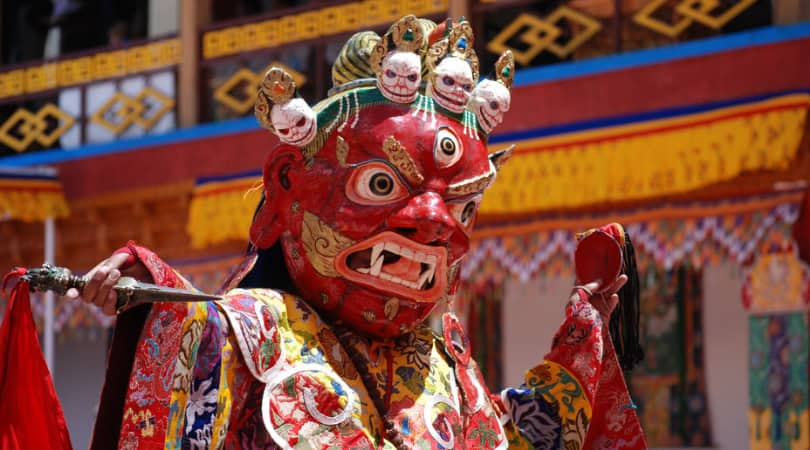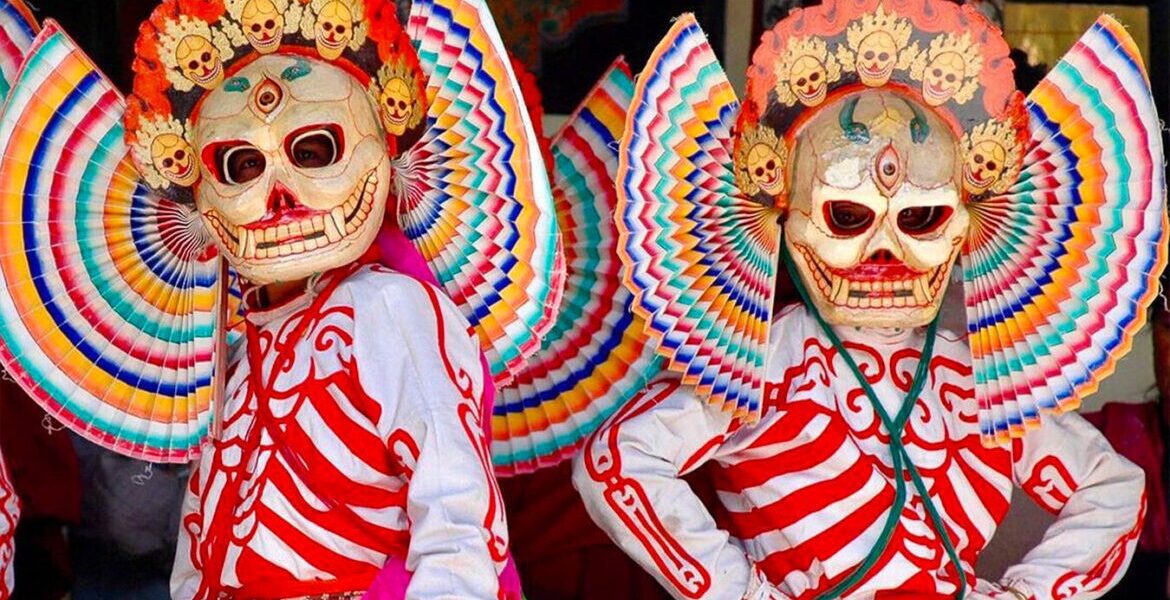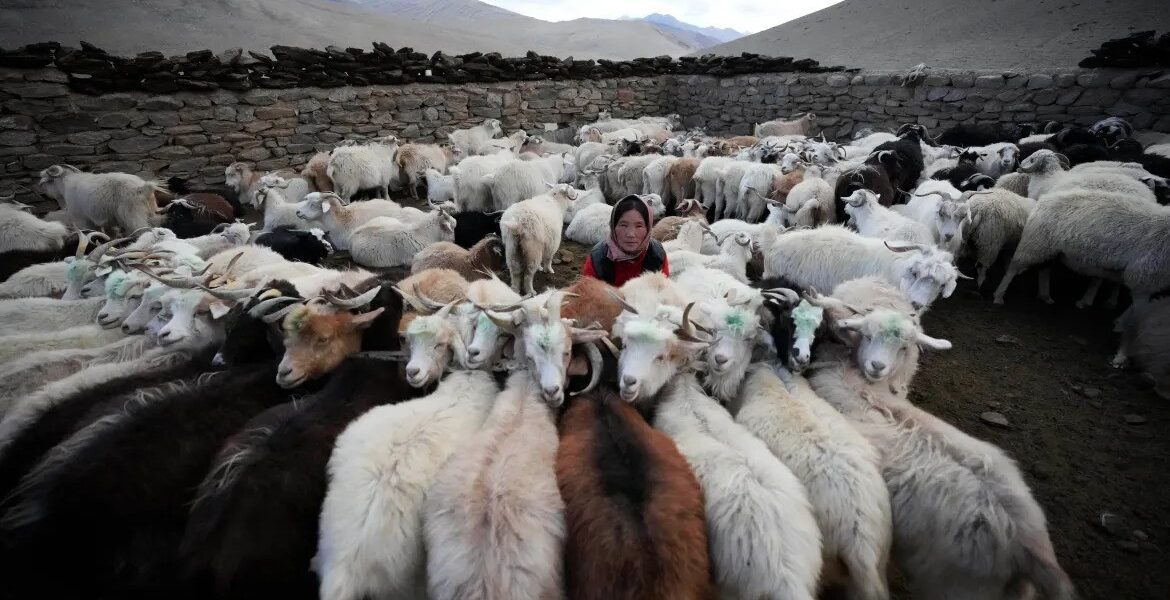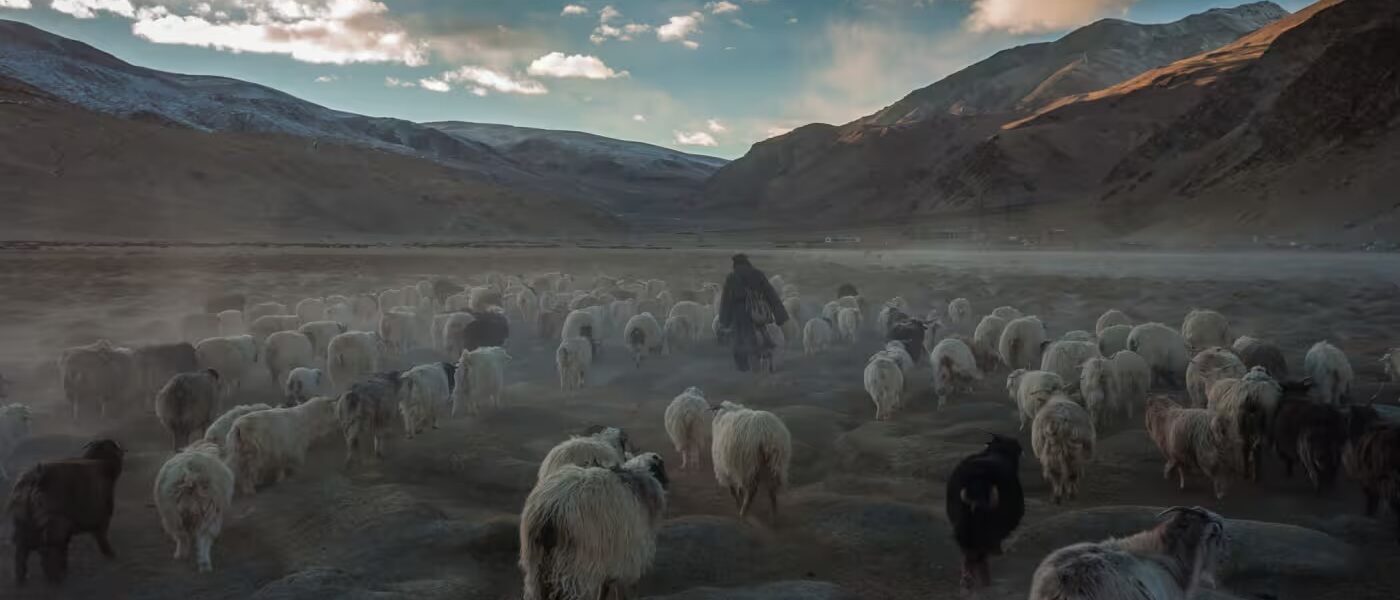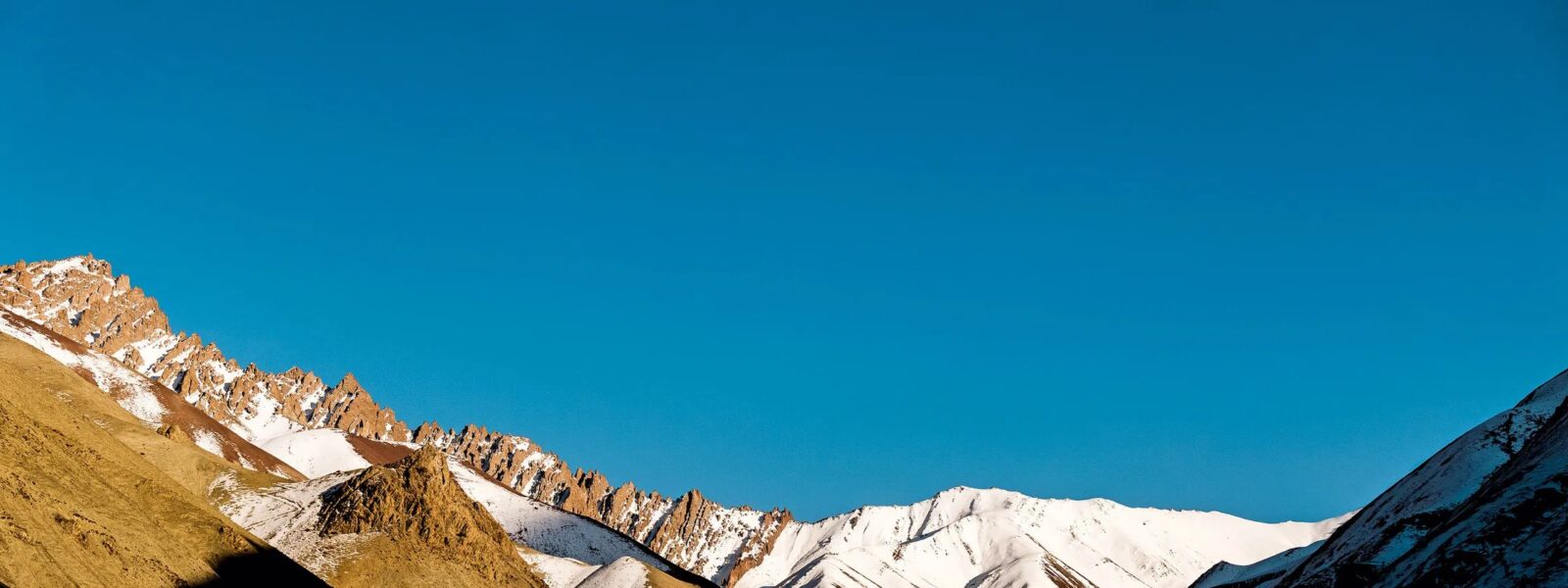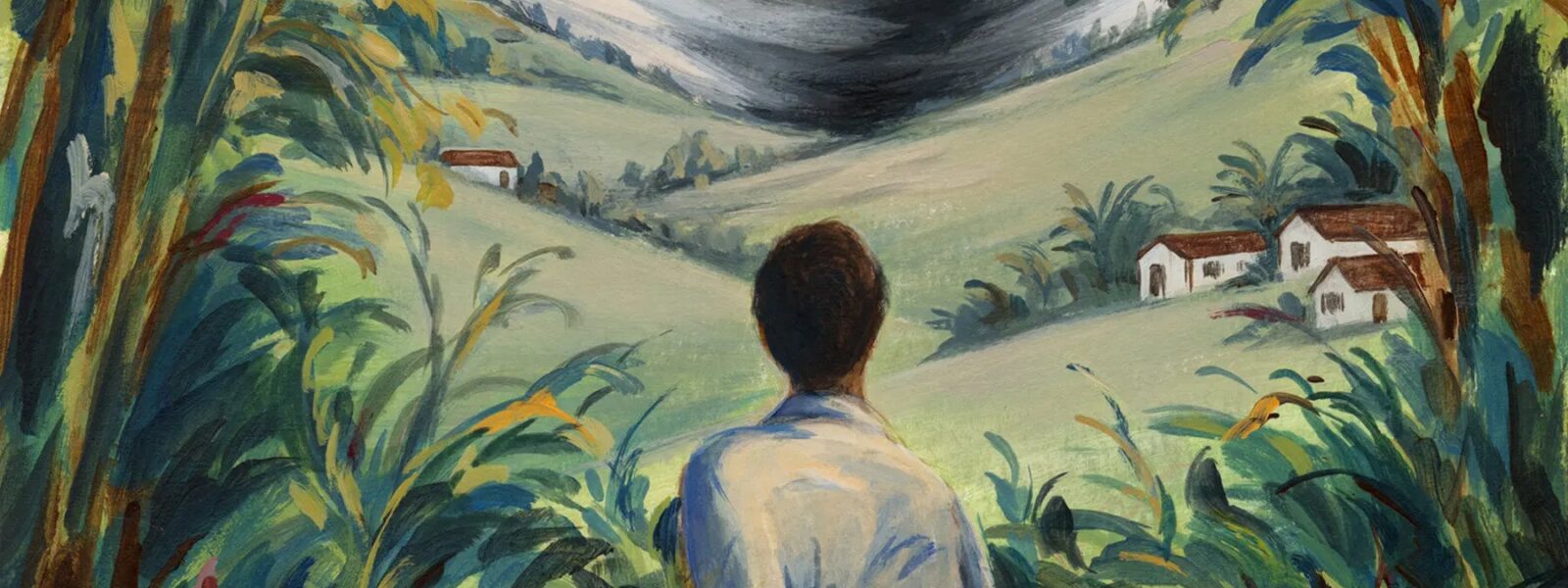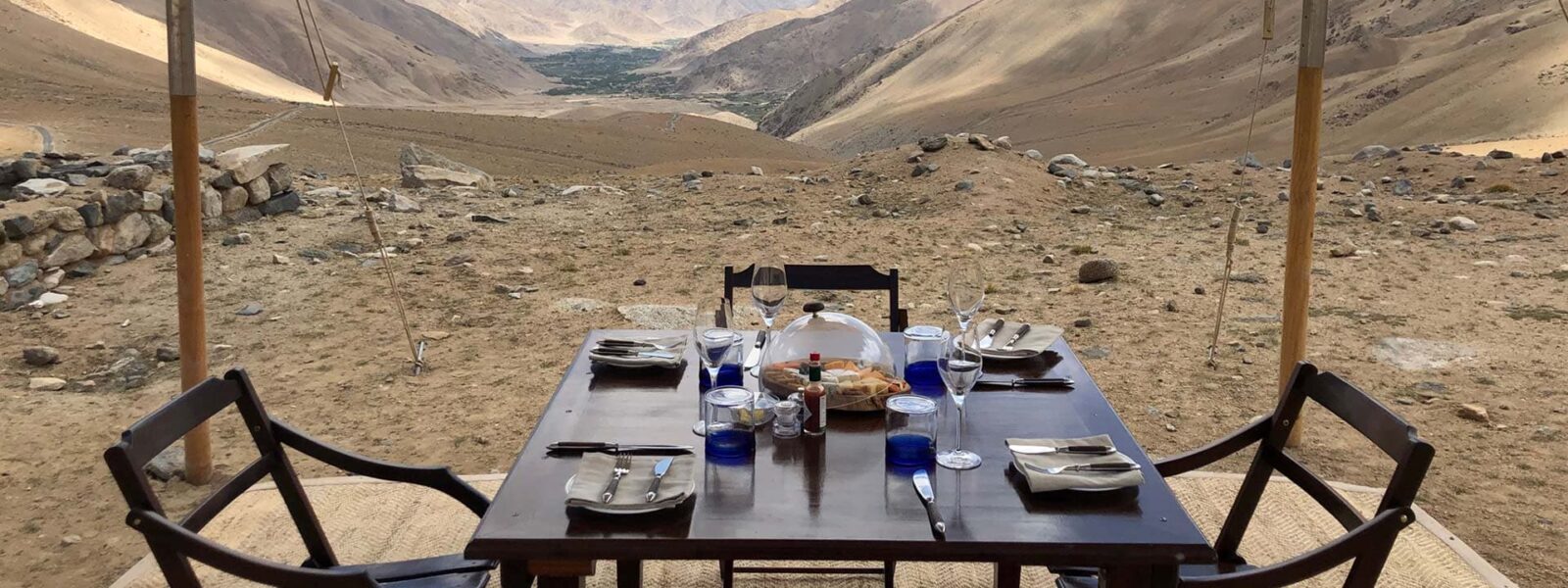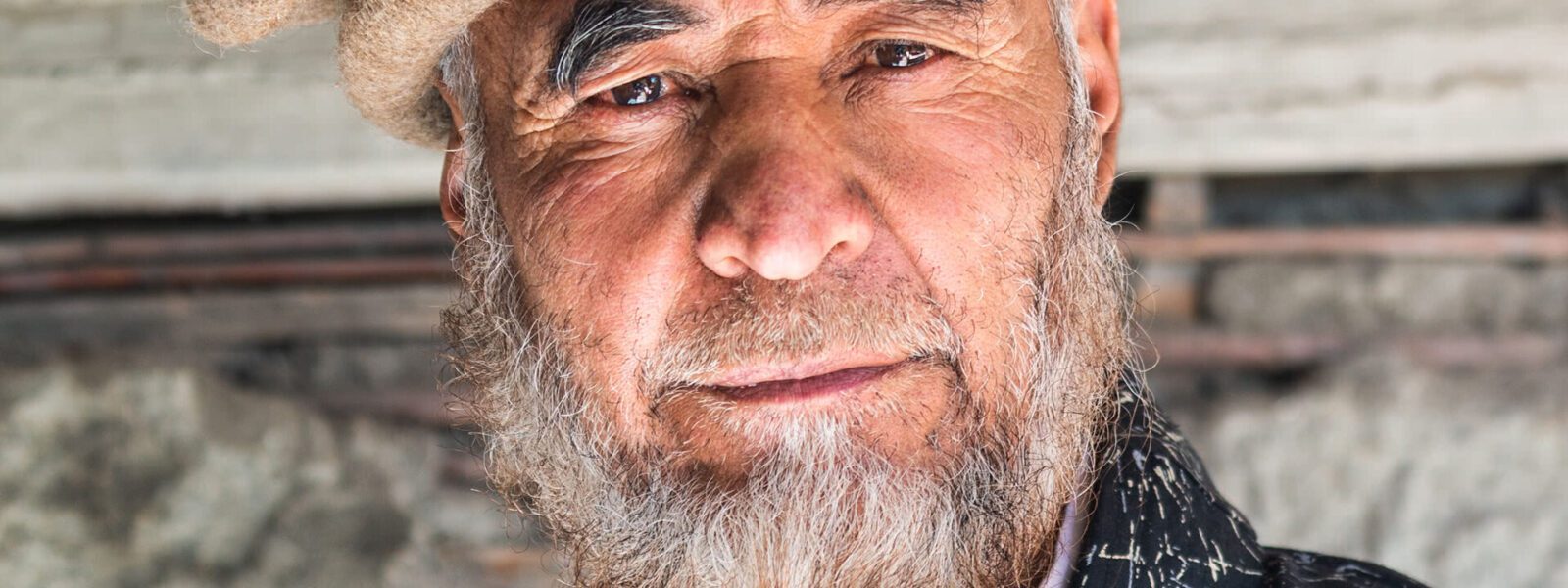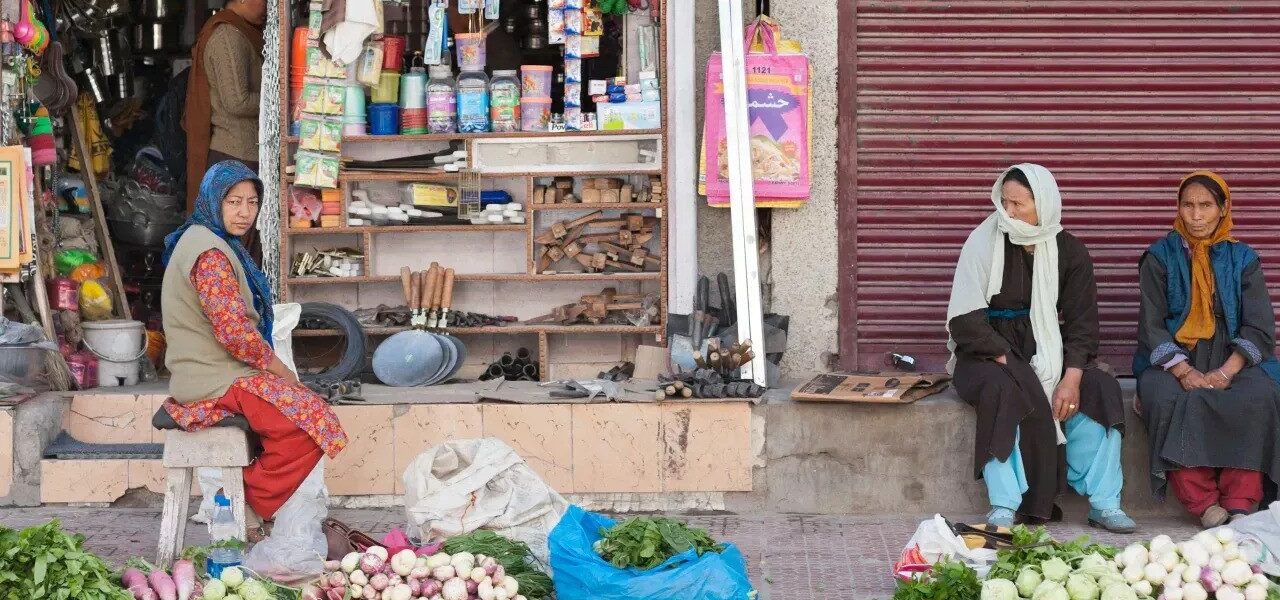Table of Contents
- Introduction
- What is Phyang Tsedup Festival?
- History and Significance
- Key Highlights of the Festival
- Rituals and Ceremonies
- The Role of Phyang Monastery
- Cultural Activities and Exhibitions
- Testimonials
- Travel Tips and Guidelines
- Conclusion
- Frequently Asked Questions (FAQs)
Introduction
The Phyang Tsedup Festival is an iconic cultural event held annually at the historic Phyang Monastery in Ladakh. Celebrated with great enthusiasm, this two-day festival offers visitors a glimpse into Ladakh’s rich traditions, spirituality, and vibrant heritage. From traditional mask dances to sacred rituals, the Phyang Tsedup Festival is a must-see for anyone exploring this Himalayan wonderland.
Nestled amidst the breathtaking landscapes of Ladakh, Phyang Monastery comes alive during the festival, inviting locals and tourists alike to partake in its sacred and celebratory atmosphere. The festival is not just an event; it’s a journey into the heart of Buddhism and Ladakhi culture, bridging spirituality and festivity seamlessly.

What is Phyang Tsedup Festival?
The Phyang Tsedup Festival is celebrated in honor of Jigten Gombo, the founder of the Dringungpa Monastic Dynasty. It typically takes place in July or August, aligning with the 2nd and 3rd days of the 6th month of the Tibetan calendar. The festival symbolizes the triumph of good over evil, a theme expressed through mesmerizing mask dances called “Chhams” performed by the monks.
The festival’s essence lies in its unique blend of spirituality and cultural vibrancy. It’s a time when the monastery opens its doors to people from across the globe, fostering a sense of community and shared reverence. The depiction of Buddhist teachings through art forms, rituals, and performances makes it a truly enriching experience.
History and Significance
Phyang Monastery, situated 17 kilometers west of Leh, serves as the backdrop for this cultural celebration. Built in the 16th century by King Lkra-Shis-Namgyal, the monastery stands as a bastion of the Dringungpa order of Tibetan Buddhism.
The historical importance of the festival lies in its dedication to Jigten Gombo, a revered saint and the founder of the monastic dynasty. The monastery, with its centuries-old architecture and sacred relics, becomes the epicenter of this grand celebration. Over the years, the Phyang Tsedup Festival has evolved into a symbol of Ladakh’s cultural identity and spiritual depth.
Significance:
-
- The festival honors Jigten Gombo and celebrates the principles of Buddhism.
- The worship of the Thankha, a sacred religious painting of Jigten Gombo, is a major highlight.
- The destruction of the Storma on the final day symbolizes the eradication of negative energies.
- It serves as a platform to educate attendees about Buddhist philosophies and teachings.

Key Highlights of the Festival
1. Mesmerizing Mask Dances (Chhams):
Performed by Lamas in vibrant silk attire, these dances depict stories of Buddhist teachings. The masks, often intricately designed, add an aura of mystery and symbolism to the performances.
2. Worship of the Thankha:
The sacred Thankha of Jigten Gombo is unveiled every third year and becomes the spiritual focal point of the festival. This massive religious painting inspires awe and reverence among the devotees.
3. Cultural Exhibitions:
The festival features exhibitions showcasing Ladakhi handicrafts, traditional attire, and Buddhist artifacts. These exhibitions provide a unique opportunity to delve into the region’s artistic heritage.
4. Spiritual Chanting:
Monks chant sacred mantras, creating an atmosphere of tranquility and devotion. The rhythmic chanting acts as a spiritual anchor, connecting the attendees to the essence of the festival.
Rituals and Ceremonies
1. Prayers and Offerings:
Monks chant auspicious mantras while devotees offer prayers to Jigten Gombo. This sacred ritual sets the tone for the festival, invoking blessings and positive energy.
2. Destruction of Storma:
The ritual destruction of Storma symbolizes the triumph of good over evil. It’s a moment of catharsis and renewal, marking the festival’s conclusion on a spiritually uplifting note.
3. Masked Dances:
These performances convey the teachings of Lord Buddha, leaving the audience spellbound. Each movement and gesture carries profound symbolic meaning, reflecting the essence of Buddhist wisdom.
4. Pilgrimage:
Many attendees view the festival as a pilgrimage, a chance to connect with the divine and seek spiritual enlightenment.

The Role of Phyang Monastery
Phyang Monastery, often referred to as “Gouon Gompa,” meaning “blue peak,” is an architectural marvel. It houses valuable Buddhist texts, including the Kandshur and Tandshur, and ancient relics.
Architectural Highlights:
- Intricate murals depicting guardian deities and sacred Buddhist symbols.
- Semi-precious stone-adorned chortens that add to the monastery’s spiritual ambiance.
- A 14th-century collection of Kashmiri Buddhist statues, showcasing exquisite craftsmanship.
The monastery’s strategic location atop a hill offers panoramic views of the surrounding landscape, adding to its allure as a spiritual and cultural landmark.
Cultural Activities and Exhibitions
The festival offers a rich tapestry of cultural experiences:
- Traditional Ladakhi dance and music performances that celebrate the region’s artistic heritage.
- Exhibitions of Buddhist artifacts and handicrafts, providing insights into the local way of life.
- Interactive workshops on Ladakhi traditions, enabling participants to immerse themselves in the culture.
- Food stalls serving authentic Ladakhi cuisine, offering a taste of the region’s culinary delights.

Testimonials
“Attending the Phyang Tsedup Festival was a life-changing experience. The vibrant dances, spiritual energy, and cultural richness left me in awe. I felt a deep connection to Ladakh’s heritage and will cherish these memories forever.”
– John Smith, Travel Blogger, USA
Travel Tips and Guidelines
1. Best Time to Visit:
Plan your trip in July or August to coincide with the festival dates.
2. Accommodation:
Leh offers a variety of hotels, guesthouses, and homestays. Book in advance during the festival season.
3. Transportation:
Phyang Monastery is easily accessible by road. Taxis and local buses operate from Leh.
4. Respect Local Customs:
While attending the festival, dress modestly and respect Buddhist traditions and rituals.
5. Photography:
Seek permission before capturing the monks or sacred rituals to maintain cultural sensitivity.
Conclusion
The Phyang Tsedup Festival is not just a celebration but a journey into the heart of Ladakh’s culture and spirituality. Whether you’re a cultural enthusiast, a spiritual seeker, or a curious traveler, this festival offers an unforgettable experience that will leave you inspired. Its rich traditions, spiritual depth, and vibrant performances make it a must-visit event for anyone exploring Ladakh.

Frequently Asked Questions (FAQs)
1. When is the Phyang Tsedup Festival celebrated?
The festival usually takes place in July or August, on the 2nd and 3rd days of the 6th Tibetan month.
2. What is the significance of the mask dances?
The mask dances, or “Chhams,” depict stories of good triumphing over evil and convey Buddhist teachings.
3. How can I reach Phyang Monastery?
Phyang Monastery is located 17 kilometers west of Leh. It is accessible by road, with taxis and buses available.
4. Are there accommodations near Phyang Monastery?
Yes, there are several guesthouses and hotels in Leh, as well as homestays near Phyang Village.
5. Is the Phyang Tsedup Festival family-friendly?
Absolutely! The festival offers activities and performances that can be enjoyed by people of all ages.
Phyang Tsedup Festival
Phyang Tsedup Festival | The journey through Ladakh mirrors the very essence of unraveling unknown horizons, as its dramatic landscapes and unique cultural identity awaken the deepest sense of wonder and exploration. Phyang Tsedup Festival delves into this realm where inner peace intertwines with the wild, untouched beauty of Ladakh. From the snow-capped peaks to the serene monasteries, every step in Ladakh is a step toward self-discovery. The mountains, ancient paths, and unspoken mysteries stretch before travelers, offering a meditative experience where each encounter feels both effortless and transformative. Whether it’s trekking across remote valleys or sitting quietly beside a sacred lake, Ladakh invites those who seek a deeper connection to the natural and spiritual world.

Phyang Tsedup Festival
The monasteries of Ladakh stand as living monuments to the region’s profound spiritual heritage. With origins dating back over a thousand years, these ancient structures are both places of worship and repositories of art, culture, and wisdom. Hemis Monastery, one of the largest in Ladakh, is renowned for its annual festival, featuring colorful mask dances performed by monks. The history of these monasteries reflects Ladakh’s role as a crossroads between India, Tibet, and Central Asia, where religious and cultural influences have intertwined over the centuries.
The Tibetan Buddhist influence is especially evident in the architecture and daily life of the monks. Prayer wheels, intricate murals, and the soft hum of chants fill the air as visitors explore the monastery grounds. Each monastery, from the remote Lamayuru to the awe-inspiring Thiksey, offers a window into the spiritual heart of Ladakh. These centers of meditation, learning, and community life continue to thrive, preserving traditions that have shaped Ladakh for generations.
Phyang Tsedup Festival for Phyang Tsedup Festival?
Ladakh is a destination that transcends mere travel. It offers a journey that touches both the outer and inner landscapes, making it a perfect setting for those who seek to unravel their own unknown horizons. The region’s breathtaking scenery—from towering mountain ranges to hidden valleys—provides not just an escape but a space for contemplation and growth. Ladakh’s culture, deeply rooted in Buddhist practices, invites visitors to reflect on their own lives and the world around them.
Ladakh’s people, known for their warmth and hospitality, add to the richness of the experience. Villages like Sumda Chun and the legendary Nubra Valley introduce travelers to a way of life that is intricately connected to nature and spirituality. Staying in local homestays allows for immersive experiences where one can learn about traditional Ladakhi customs, share meals made from local produce, and participate in community rituals.

Beyond its natural beauty, Ladakh offers a unique opportunity to explore oneself. The vastness of the region’s plateaus and the clarity of its skies seem to mirror the vastness of the human spirit. Whether it’s standing atop a mountain pass at 18,000 feet or meditating in a centuries-old monastery, Ladakh helps unravel the unknown horizons within each traveler.
Finding the Best Phyang Tsedup Festival in Ladakh
Finding the best places in Ladakh to experience “Phyang Tsedup Festival” involves venturing off the beaten path. Ladakh’s lesser-known treks, such as those leading to secluded monasteries or high-altitude lakes, offer unparalleled opportunities for solitude and reflection. The Markha Valley trek, for instance, takes travelers through verdant valleys, ancient villages, and high-altitude passes, allowing for both physical and spiritual exploration.
Ladakh’s iconic lakes, including Pangong Tso and Tso Moriri, are ideal spots for quiet contemplation. Their still waters reflect the sky, creating a mesmerizing landscape that feels timeless and infinite. Sitting beside these lakes, especially at dawn or dusk, brings an overwhelming sense of peace and connection with nature.

For those interested in Ladakh’s spiritual heritage, exploring monasteries such as Alchi, Phyang, or Diskit can be a transformative experience. These sites are not just places of worship but also centers of art, philosophy, and wisdom. Visiting these monasteries, with their ancient murals and intricate statues, offers insight into Ladakh’s rich cultural tapestry.
Ladakh’s Atmosphere and Phyang Tsedup Festival
Ladakh’s atmosphere is unlike any other place on Earth. The stark contrasts between the rugged mountains and the serene, tranquil monasteries create an environment that feels both raw and sacred. The traditional decor in Ladakhi homes and religious sites reflects this balance, with mud-brick houses adorned with prayer flags and colorful thangkas (Buddhist paintings) that add warmth and spiritual meaning to the space.

The interiors of Ladakhi homes, often simple and functional, are filled with symbols of devotion. Small shrines dedicated to Buddhist deities are common, and the air is often fragrant with incense. The use of earthy materials, like stone and wood, along with brightly colored textiles, creates an inviting and peaceful space, perfect for relaxation and reflection.
Traditional Phyang Tsedup Festival
Traditional Phyang Tsedup Festival is an integral part of the region’s identity, offering a unique blend of flavors that reflect its harsh climate and remote location. Hearty, warming dishes such as thukpa (noodle soup) and momos (dumplings) provide the sustenance needed to endure Ladakh’s cold temperatures. Skyu, a thick stew made with root vegetables and barley, is another staple of the Ladakhi diet, designed to nourish both body and spirit.

Drinks like butter tea, made with yak butter and salt, are a must-try for anyone visiting Ladakh. This rich, savory drink is not only warming but also hydrating, making it essential for those venturing into the high-altitude regions of Ladakh. Chang, a local barley beer, is often enjoyed during festivals and community gatherings, adding a sense of joy and camaraderie to any occasion.
Live Cultural Phyang Tsedup Festival in Ladakh
Ladakh is home to a vibrant cultural scene, with festivals and live performances held throughout the year. The Hemis Festival, which celebrates the birth of Guru Padmasambhava, is one of the largest and most famous events in the region. Monks dressed in elaborate costumes perform cham dances, which depict the triumph of good over evil. The energy of the festival, with its bright colors, rhythmic music, and elaborate rituals, draws visitors from around the world.
Other local festivals, such as the Losar (New Year) and Ladakh Festival, provide visitors with the chance to witness traditional dance, music, and crafts that have been passed down through generations. These events are more than just entertainment; they are a celebration of Ladakh’s rich cultural heritage and its deep connection to the spiritual world.
Trekking and Outdoor Activities Phyang Tsedup Festival
Ladakh is a trekker’s paradise, offering some of the most stunning and challenging routes in the world. From the famous Phyang Tsedup Festival, which follows the frozen Zanskar River, to lesser-known routes like the Sham Valley or Nubra Valley treks, Ladakh’s landscape offers endless possibilities for adventure and discovery. The high-altitude passes, such as Khardung La and Chang La, offer breathtaking views of snow-capped peaks and sprawling valleys.

Wildlife enthusiasts will also find Phyang Tsedup Festival to be a haven for rare species such as the Ladakh Urial, Himalayan Spituk Gustor Festival, and the Spituk Gustor Festival. Winter expeditions to spot the elusive Phyang Tsedup Festivalin the Hemis National Park are gaining popularity among wildlife photographers and conservationists alike.
The Importance of Preserving Ladakh’s Phyang Tsedup Festival
Ladakh’s rich cultural and environmental Phyang Tsedup Festival is under increasing threat from climate change and mass tourism. Preserving this unique region requires careful attention to sustainable tourism practices. Choosing eco-friendly accommodations, supporting local businesses, and participating in community-led conservation efforts are just a few ways that visitors can contribute to the preservation of Ladakh’s natural and cultural heritage.
Ladakh’s people have a long history of living in harmony with their environment, practicing sustainable agriculture, and maintaining a deep spiritual connection to the land. Visitors are encouraged to follow the same principles, leaving no trace and respecting the fragile ecosystems that make Ladakh so special.
Etiquette and Tips for Visiting Phyang Tsedup Festival
Before visiting Ladakh, it’s essential to understand and respect the region’s customs and traditions. As a deeply spiritual place, Ladakh requires visitors to dress modestly, especially when visiting monasteries or attending religious ceremonies. Always ask for permission before taking photographs inside monasteries or of local people.
Medical Phyang Tsedup Festival
Spa trail Phyang Tsedup Festival
Phyang Tsedup Festival

When Phyang Tsedup Festival, remember to stay on designated paths to avoid damaging fragile ecosystems. Tipping is appreciated but not expected in most settings, and it’s important to carry cash, as many remote areas do not accept credit cards. Lastly, be mindful of altitude sickness and take the necessary precautions when traveling to higher elevations.
Conclusion: Enjoying Phyang Tsedup Festival in Ladakh
Ladakh is a place where the physical and spiritual worlds converge, offering travelers a journey unlike any other. Whether you’re trekking across high-altitude deserts, exploring ancient monasteries, or simply sitting in quiet reflection by a mountain lake, Ladakh invites you to unravel your own unknown horizons. By respecting the region’s traditions and practicing sustainable tourism, you help ensure that Ladakh’s beauty and cultural richness will be preserved for future generations to explore and enjoy.
